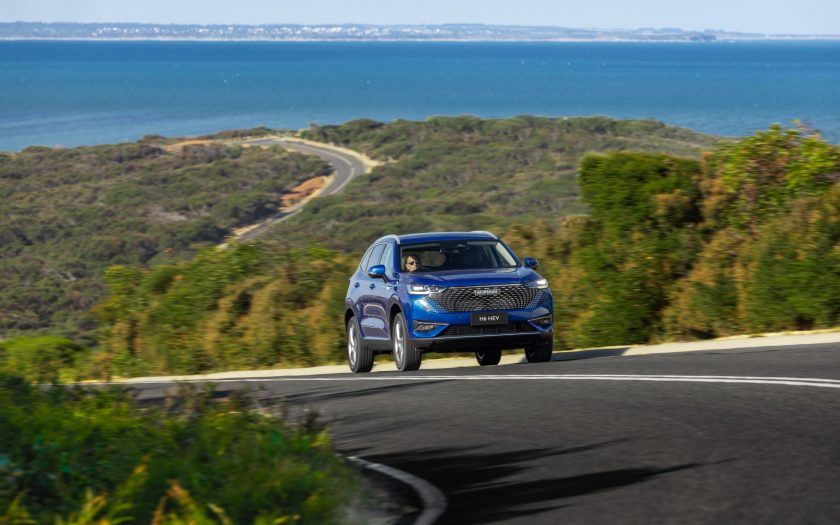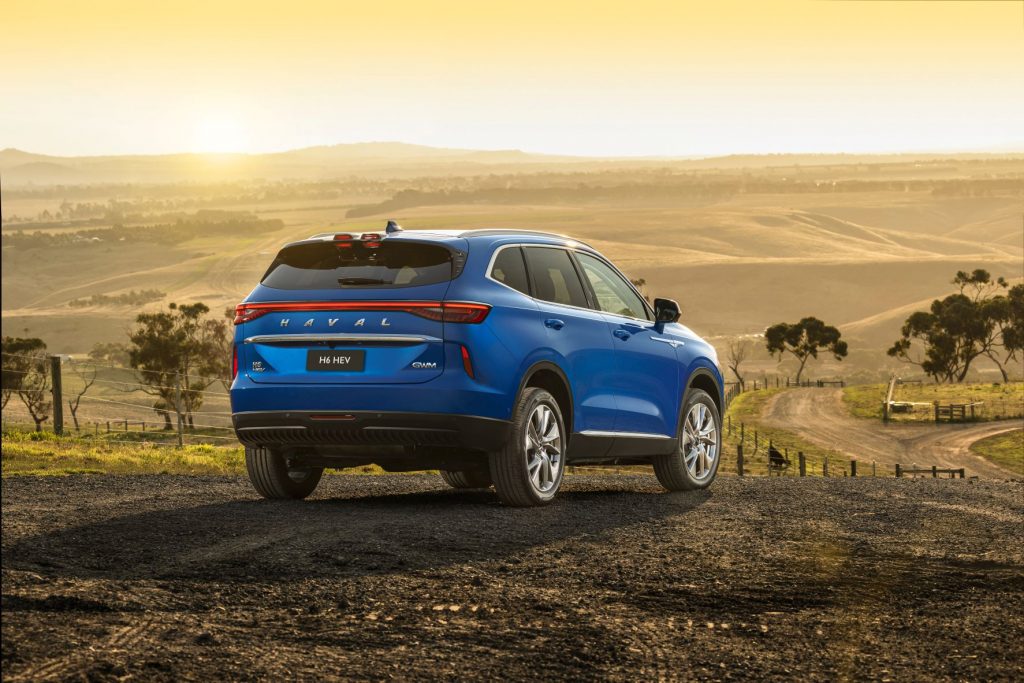Chris Riley tests the 2022 Haval H6 Ultra Hybrid with pricing, specs, ride and handling, safety, verdict and everything the over-50 driver needs to know.
Summary: Despite some annoying niggles and glitches, the Haval H6 Ultra Hybrid comes in at a compelling price. Fix those minor issues and the H6 looks like a winner.
2022 Haval H6 Ultra Hybrid SUV
Pricing: $45,990 (driveaway), premium paint (any other than white) $495
Warranty: Seven-years, unlimited km, five years roadside assist
Safety: 5-star ANCAP (tested 2022, expires 2028)
Engine: 1.5-litre turbo four-cylinder petrol engine, single electric motor
Service intervals: 15,000km/12 months
Power: 110kW @ 5,500-6000rpm (petrol). 179kW combined
Torque: 230Nm @ 1500-4000rpm (petrol). 530Nm combined
Battery: 1.8kWh
Transmission: 2-speed constantly variable, front-wheel drive
Body: 4653mm (long); 1886mm (wide); 1724mm (high)
Build country: China
Weight: 1690kg
Towing capacity: 1500kg
Wheels: 19-inch alloy
Tyres: 225/55R19
Ground clearance: 170mm
Turning circle: 12.0m
Fuel tank: 61 litres
Thirst: 5.2L/100km (unleaded 91 RON)
Consumption on test: 6.6L/100km (400km)
seniordriveraus consumption on test: not tested
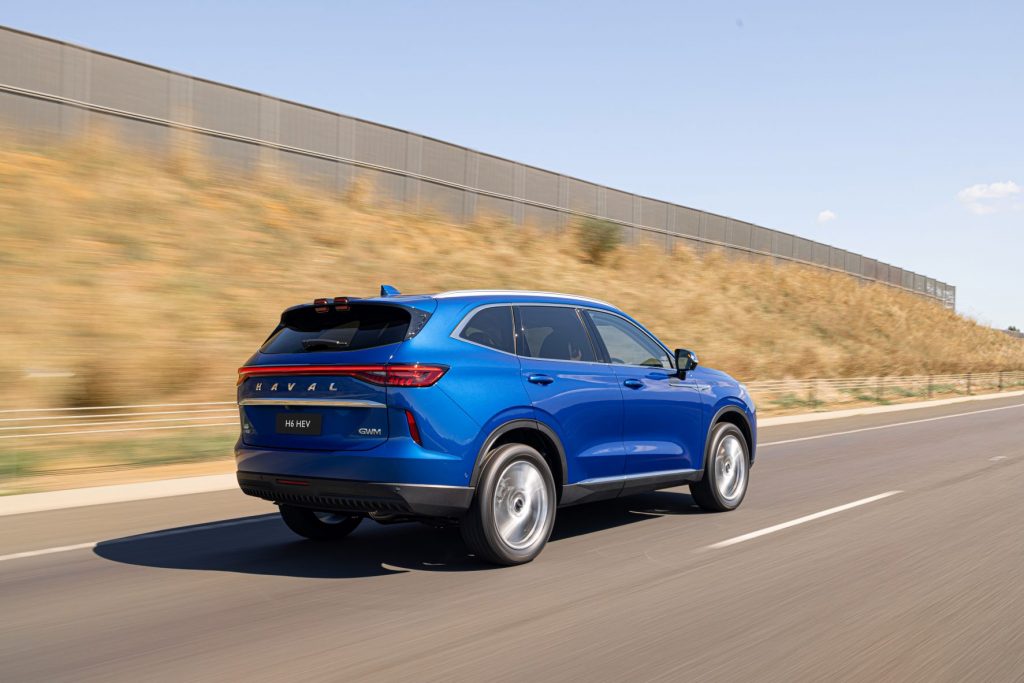
[review]
Five years ago I wrote that the Haval H6 was the best Chinese-built car that I had driven so far.
Designed by Frenchman Pierre Leclercq, who penned BMW’s X6, the mid-sized SUV impressed with its contemporary muscular design, 2.0-litre turbo, twin-clutch auto and excellent fit and finish.
It had the performance to match too, remaining flat with plenty of grip in corners.
With some work it had potential to do big things for the company which was then a new player.
So I was super excited to finally catch up with the new one after all these years to see what they had done with the car.
Long story short, it has morphed from a compact, agile, sporty car into a larger, middle of the road, somewhat docile wagon that just happens to bear the same name.
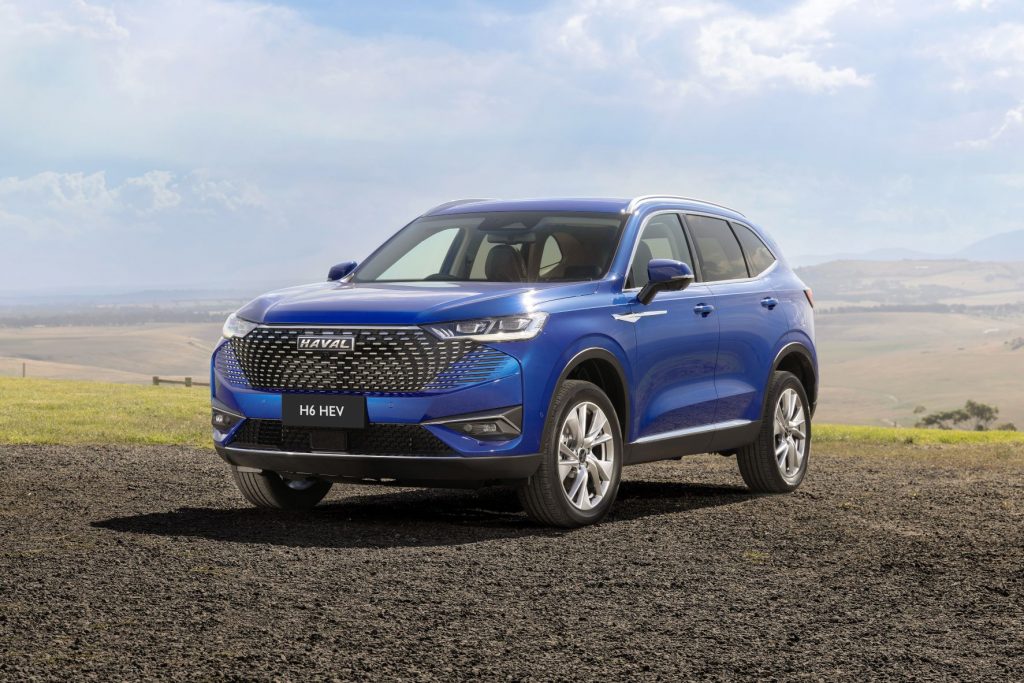
What’s it cost?
Front-wheel drive H6 Hybrid comes in just the one grade, based on the top spec Ultra.
With seven colours from which to choose, six of them a $495 option, it’s priced to sell from $45,990 driveaway.
Standard features include 19-inch alloys, artificial leather upholstery and two-zone climate air with vents for rear passengers.
Hybrid gets a cascading, Peugeot-esque front grille that morphs into the body work, setting the hybrid apart from its more mundane H6 siblings.
At the rear a pair of high-mount stop lights look down from binnacles above the tailgate, while the tail lights are joined by a band of LEDs across the back (that look pretty cool at night).
The design of the dash is right on the money with a stylish line of metal-look trim that spans the breadth and frames the air conditioning outlets, showing Haval is a quick study.
Other features include a power-adjust driver’s seat, heated and ventilated front seats and a heated leather steering wheel.
There’s also heads-up display, an electric tailgate, panoramic sunroof and a fully automatic system that will park the car for you.
Add to this LED head and tail lights, LED fog and daytime running lights, ambient interior lighting, auto-fold exterior mirrors, auto lights and wipers, auto-dimming rear view mirror, front and rear parking sensors – and it makes it a car you want to like.
The cabin is dominated by two large colour displays: a 12.3-inch touchscreen for infotainment in the centre of the dash and a smaller 10.25-inch screen located behind the steering wheel for the speedo and other instruments.
The touchscreen provides control for most features but it can be tricky getting it right while trying to steer and keep an eye on the traffic at the same time.
Most car makers at least provide a quick access volume knob for audio.
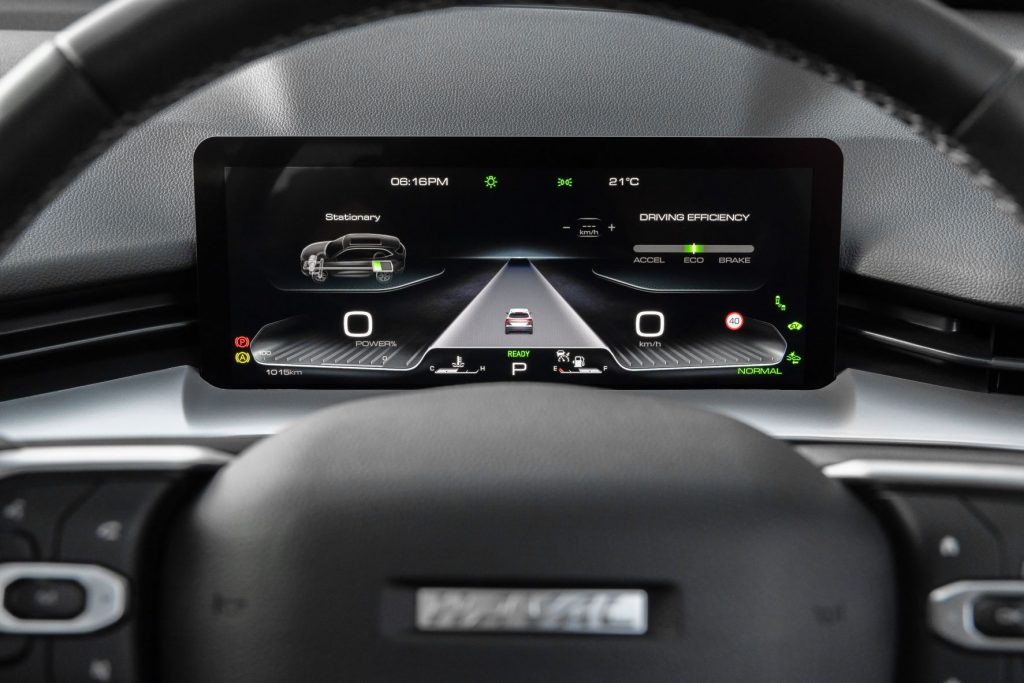
Infotainment consists of a 12.3-inch touch and scroll screen, with AM/FM radio, Bluetooth, wired Apple CarPlay and Android Auto, eight-speaker audio with DTS support, wireless phone charging and five USB ports (three front and two back).
Surprisingly, there’s no navigation or digital radio.
Five-star safety includes seven airbags, including a centre bag, 360-degree camera, forward collision warning, adaptive cruise control with stop and go, secondary collision mitigation and autonomous emergency braking including pedestrian, bicycle and crossroads.
The big, bright, high-definition camera provides a crystal clear image of the surroundings.
Other safety features include driver fatigue monitoring, blind spot monitor, lane keeping assistance and rear cross traffic alert and braking.
Two ISOfix child seat anchors are provided.
Towing capacity is 1500kg, with 225/55 series Hankook Ventus S1 Evo 3 rubber and a tyre repair kit that replaces a spare.
Haval H6 Hybrid is covered by a 7-year unlimited kilometre warranty, along with 5 years roadside assistance and 5-year capped price servicing.

What’s it go like?
The complex hybrid powertrain, which has been developed in house, consists of a 1.5 litre turbocharged petrol engine together with a twin-speed electric motor.
The petrol engine generates 110kW and 230Nm, while the battery adds another 130kW and 300Nm to the equation.
Combined output is 179kW of power and 530Nm of torque, with claimed fuel consumption of 5.2L/100km (using regular unleaded).
Paired with a dedicated DHT multi-mode transmission, with auto engine stop-start, the Hybrid combines impressive acceleration and performance at low speeds with improved efficiency and power at higher speeds.
The car has the ability to operate in a variety of drive modes, including EV, Series, Parallel and Regeneration, providing maximum performance and efficiency across all speed and load conditions.
With a highly integrated and compact design for lighter weight, the DHT system also offers excellent reliability and NVH performance.
The batteries are located under the luggage area floor, occupying the space where a spare would normally be stored.
There are four drive modes from which to choose: Eco, Normal, Sport and Snow. Sport feels the best but of course it doesn’t stay there between restarts.
Like an electric car, the battery provides explosive acceleration at take-off, while the turbocharged petrol engine kicks in at higher revs.
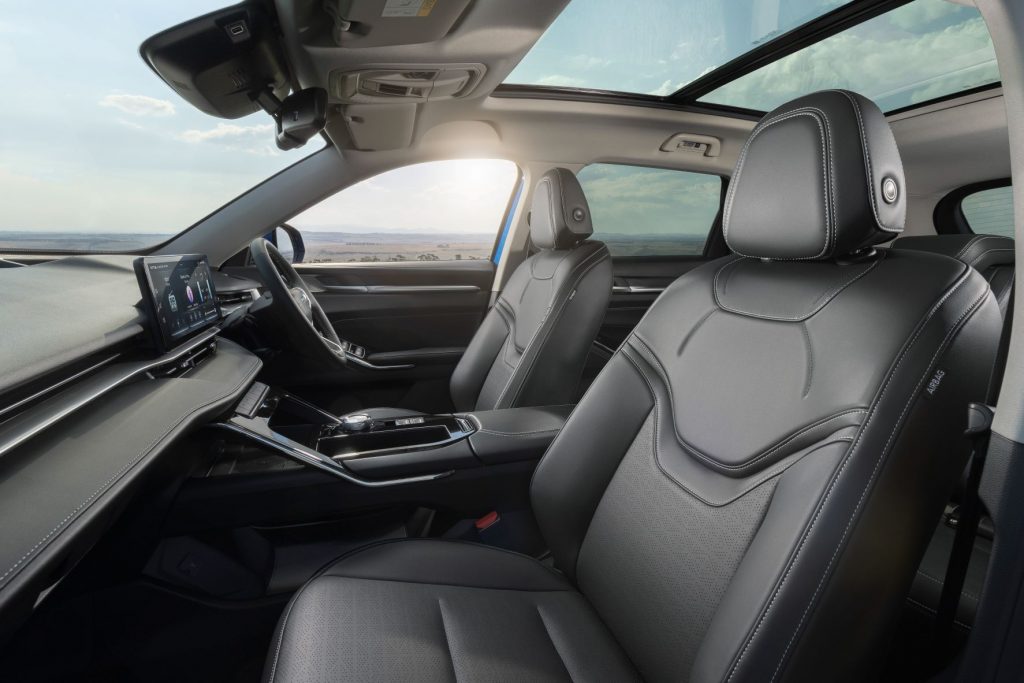
Brake regeneration can be adjusted and monitored through the touchscreen.
Sounds just peachy on paper but on the ground the front wheels break traction easily, with plenty of torque steer that pulls the car from side to side as the tyres scrabble for grip.
This was particularly evident during all the wet weather that we’ve been experiencing recently.
In fact, the H6 Hybrid was less than inspiring in the wet full stop, forcing a cautious approach to corners.
Electronic checks and balances are designed to prevent this kind of thing from happening, but the only thing that really worked was a light right foot.
All-wheel drive (AWD) would go a long way to alleviating this problem. We understand an AWD version is coming, the sooner the better as far as we’re concerned.
Adding to the woes, adaptive cruise control stopped working in the wet, with messages about “unable active [sic]”.
The auto unlock trigger on the door handle becomes easily confused too, necessitating the use of the key fob.
Meanwhile, the radio refused to deliver any volume at one point and the touchscreen remained unresponsive at times, despite repeated jabs.
Haval/Great Wall has a bit of work to do to get rid of the bugs, we suggest.
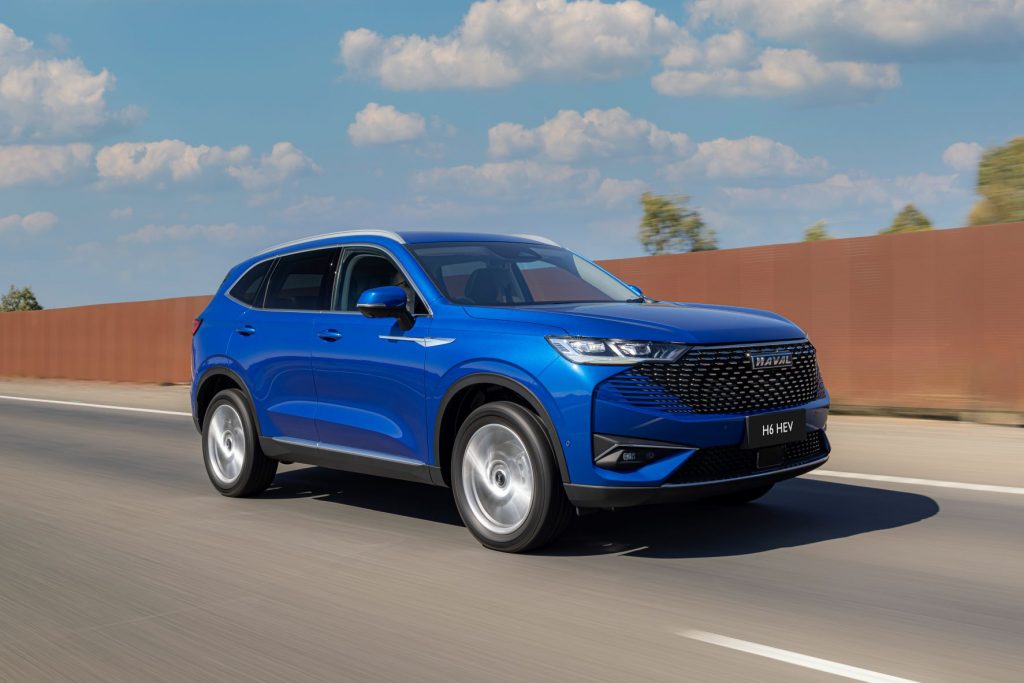
It’s not all bad though. The cabin is roomy and reasonably comfortable, with plenty of rear legroom and air vents for back seat passengers.
The boot is a good size too, with 600 litres of storage that expands to 1485 litres with the rear seats folded.
Fuel economy, however, was excellent. We were getting 6.6L/100km after 400km, with plenty left in the tank.
What we like
- Good size
- Reasonably comfortable
- Plenty of rear legroom
- Rear air vents
- Good-sized boot
- Doesn’t use much fuel
What we don’t like
- No digital radio
- No satellite navigation
- No gear change paddles
- Torque steer
- Bouncy suspension
- Lacks grip in the wet
- Cruise control refused to activate
What over-50s need to know
The price is compelling.
And for many people that’s the primary consideration.
Other than that, the Haval H6 Hybrid is not all good and it is not all bad.
The good news is that it is roomy and reasonably comfortable, and for the most part easy to drive.
The Haval offers plenty of car for your money, a seriously impressive array of tech, comfort and safety features, save for two key features – navigation and digital radio.
The not so good news is that we have identified some issues of concern that need to be addressed. Fix them and there will be no holding the H6 back.
seniordriver comments
Haval is a relative newcomer to the Australian market, and is already selling strongly, in part, we suspect, because of an enticing sticker price. But there’s more to it than that, and buyers report being highly pleased with the H6’s features and reliability.
One of our readers reports that he has bought a Haval H6 for his limousine service, and that’s always a strong recommendation.
Once again, we’ll call out the unnecessary fussiness of some of the controls. Despite constant warnings about being distracted when driving, having to idle with a touchscreen when on the move is a real concern. And even trying to avoid using tricky controls when driving is admirable, the simple truth is there are times when it’s unavoidable.
The absence of sat nav is a strange omission, as is the absence of digital radio, especially so since the H6 is otherwise well-equipped.
Of some concern is the H6’s propensity to break traction, especially in the wet. Drivers have a right to expect a vehicle to have a good grip on the road, and having to constantly drive with a light right foot is tiring and potentially dangerous.
We have in the past warned about the possible risks of using cruise control in wet conditions, so perhaps the adaptive cruise control is designed to stop working when things get wet and slippery.
